Taming the Mane: The Ultimate Guide to Managing Thick, Coarse Hair | Professional Salon Tips
Embracing the Power of Your Thick, Coarse Hair
Thick, coarse hair is often described as a double-edged sword. On one hand, it possesses incredible volume, holds styles for days, and exudes a look of health and vitality that many desire. On the other hand, managing thick, coarse hair can feel like a daily battle against frizz, dryness, and sheer unruliness. Its tendency to be thirsty for moisture and prone to tangles can leave you feeling frustrated, reaching for the nearest hair tie as a permanent solution. But what if you could transform that struggle into a simple, effective routine?

This comprehensive guide is your roadmap to taming the mane. We're diving deep into the science of your hair type and providing actionable, professional-grade advice to help you unlock its true potential. Forget the endless fight; it's time to understand, nourish, and celebrate your hair's unique texture. By embracing the right techniques, products, and haircuts, you can turn your powerful locks into your greatest accessory. This isn't about changing your hair, but rather learning its language and giving it exactly what it needs to thrive, revealing smooth, manageable, and stunningly beautiful tresses.
The Anatomy of Thick, Coarse Hair: Understanding Your Texture
Before you can effectively manage your hair, it’s crucial to understand what makes it unique. The terms "thick" and "coarse" are often used interchangeably, but they describe two different characteristics. "Thick" refers to the density of your hair—the number of individual hair follicles on your scalp. "Coarse" refers to the circumference of each individual hair strand. It's possible to have fine hair that is thick (a lot of thin strands) or coarse hair that is thin (fewer, wider strands). When you have both thick and coarse hair, you're dealing with a high volume of wide-diameter strands, which creates that signature magnificent mane.
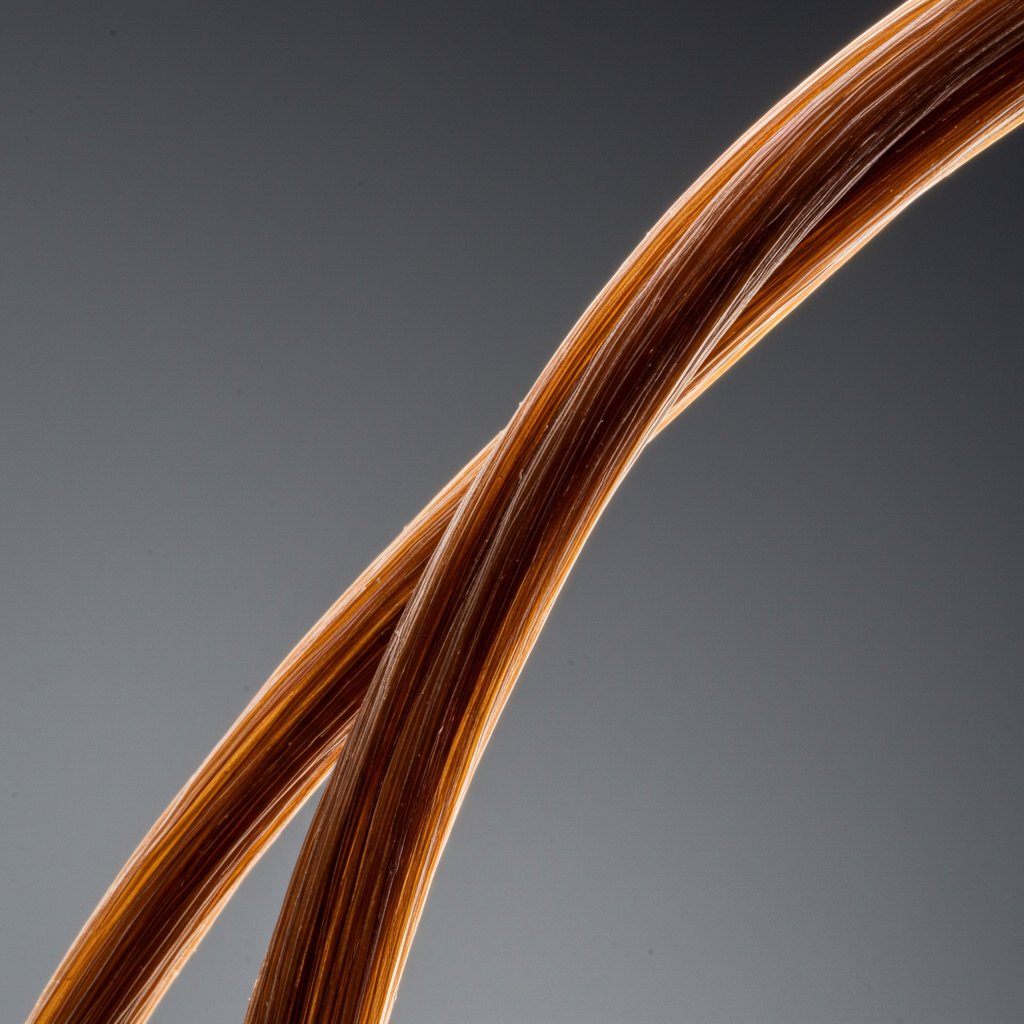
The Science Behind the Strand
Each coarse hair strand has a more robust structure than its finer counterparts, typically consisting of all three layers of the hair shaft: the medulla (the innermost core), the cortex (the middle layer providing strength and color), and the cuticle (the protective outer layer). In coarse hair, the cuticle layer is often thicker, with more overlapping scales. While this adds strength, it also means the hair is more porous and susceptible to moisture loss. This porosity is a key reason why thick, coarse hair often struggles with dryness and frizz; the raised cuticle scales allow moisture to escape easily and environmental humidity to penetrate, causing the strand to swell and appear frizzy.
Common Challenges and How to Address Them
The primary challenges associated with this hair type stem directly from its structure. The constant battle with dryness requires a moisture-focused regimen. The inherent bulk can make styling feel overwhelming and time-consuming. And the tendency for frizz means that humidity can be your worst enemy. The solution isn't to fight these characteristics but to work with them. The right strategy involves infusing massive amounts of hydration, using products that seal the cuticle to lock in that moisture, and choosing haircuts that strategically remove weight without sacrificing shape. Understanding these core principles is the first step toward achieving consistent, beautiful results.
The Foundation: A Moisture-Rich Washing and Conditioning Routine
The way you wash and condition your hair sets the stage for everything that follows. For thick, coarse hair, the goal is to cleanse gently while maximizing moisture retention. Over-washing can strip the hair of its natural oils (sebum), which are essential for keeping coarse strands supple and hydrated. These oils have a harder time traveling down the wide, textured shaft, so preserving them is paramount.
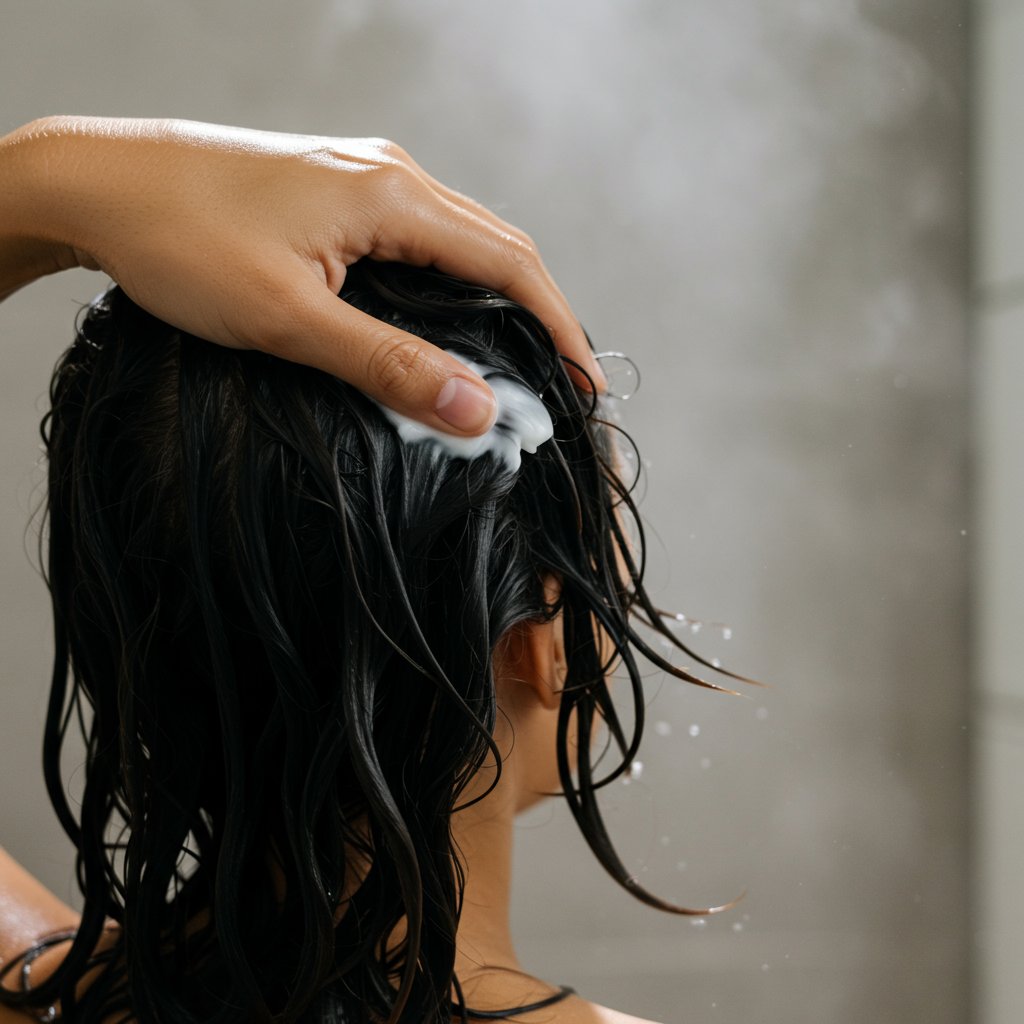
How Often Should You Wash?
For most people with thick, coarse hair, washing every 2-4 days is a good starting point. Some may even find they can go longer. Pay attention to your scalp's health and your hair's feel. If your scalp feels oily but your ends are dry, consider a co-wash (washing with conditioner only) between full shampoos to refresh your hair without stripping it. Using a quality dry shampoo at the roots can also extend the time between washes. The key is to avoid the squeaky-clean feeling, which for your hair type is a sign of dehydration.
Choosing the Right Cleansers and Conditioners
Your product selection is non-negotiable. Look for sulfate-free shampoos, as sulfates are harsh detergents that strip natural oils. Instead, opt for formulas with hydrating ingredients like glycerin, shea butter, argan oil, or avocado oil. When you shampoo, focus the product on your scalp where oil and product buildup occurs, and let the suds gently run down the lengths of your hair as you rinse. Follow up with a rich, creamy, and intensely hydrating conditioner. This is where you can be generous. Apply conditioner from the mid-lengths to the ends, and use a wide-tooth comb to gently detangle while the conditioner is in. Let it sit for at least 3-5 minutes before rinsing with cool water to help seal the cuticle.
Must-Have Styling Products for Control and Hydration
Styling products are not an indulgence for thick, coarse hair; they are essential tools for manageability, definition, and protection. The right cocktail of products will seal in moisture, fight frizz, and make your hair easier to style. The key is layering products correctly on damp, not sopping wet, hair.
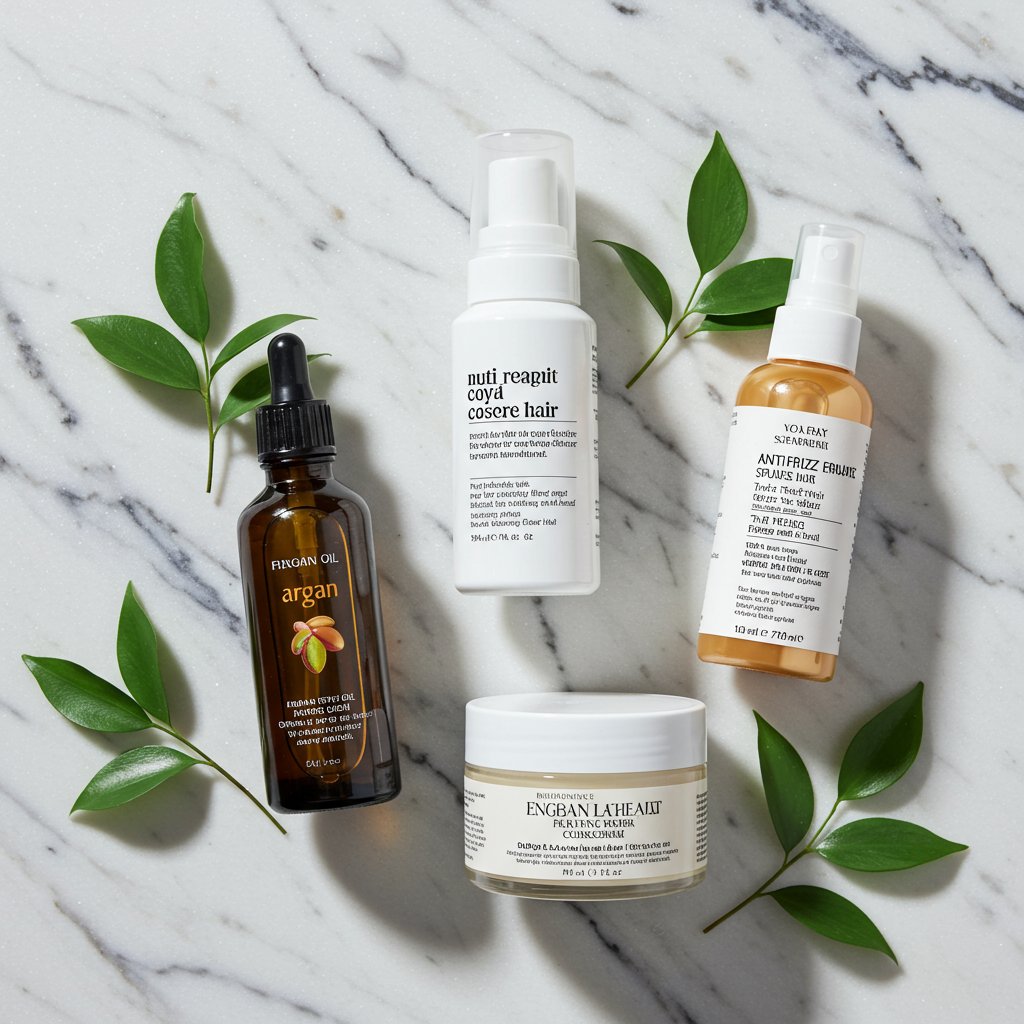
The Essential Product Lineup
- Leave-In Conditioner: This is your first step after washing. A good leave-in conditioner provides a foundational layer of moisture and detangling assistance. Look for creamy or spray formulas that won't weigh your hair down but offer significant slip.
- Hair Oil or Serum: After the leave-in, apply a high-quality hair oil or serum. These products are crucial for sealing the hair cuticle to lock in the moisture from your conditioner and leave-in. Argan oil, jojoba oil, and silicone-based serums are excellent for adding shine and creating a barrier against humidity.
- Styling Cream or Balm: A styling cream helps to define your hair's natural texture, provide a soft hold, and further combat frizz. It gives your hair weight and substance, which helps control its volume and shape. Rake it through your hair section by section for even distribution.
Application is Everything
How you apply your products is just as important as which ones you choose. After gently squeezing excess water from your hair with a microfiber towel or an old t-shirt (terrycloth towels can rough up the cuticle and cause frizz), apply your products in the order listed above. Work in sections to ensure every strand is coated. Use your fingers or a wide-tooth comb to distribute the products evenly from root to tip. This methodical application ensures your hair is protected and primed for styling, whether you're air-drying or blow-drying.
Tools of the Trade: Using the Right Brushes and Heat
The tools you use can either help or hinder your quest for manageable hair. The wrong brush can cause breakage and frizz, while excessive or unprotected heat can lead to severe dehydration and damage. Investing in high-quality tools tailored to your hair type is a game-changer.
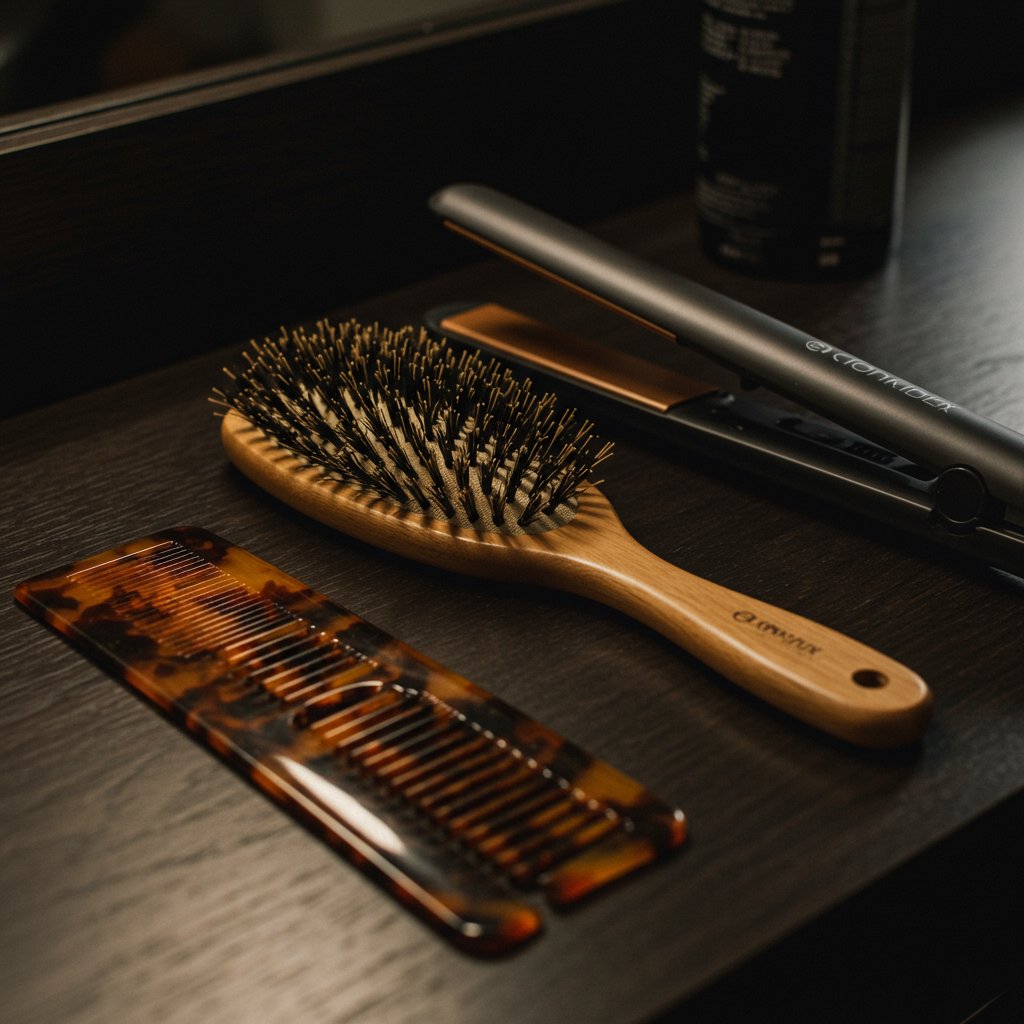
Brushes and Combs
For detangling, always use a wide-tooth comb or your fingers on wet, conditioned hair. Never try to force a brush through wet, thick hair, as this is when it's most fragile. For blow-drying and styling, a boar bristle brush is an excellent choice. The natural bristles are gentle on the hair and help to distribute your scalp's natural oils down the hair shaft, which is incredibly beneficial for dry, coarse textures. They also create tension for a smoother, shinier blowout. A mixed-bristle brush (boar and nylon) can also be effective for added control.
Smart Heat Styling
While minimizing heat is always a good idea, it's often a necessary tool for smoothing and styling coarse hair. The golden rule is to always use a heat protectant spray. This creates a barrier between your hair and the hot tool, preventing moisture loss and damage. When using a blow dryer, attach the concentrator nozzle to direct the airflow down the hair shaft, which helps to smooth the cuticle. Invest in high-quality tools with adjustable temperature settings made from ceramic or tourmaline, which provide more even heat distribution. Coarse hair can handle higher temperatures, but it's still wise to start lower and only increase as needed to achieve your style.
The Perfect Cut: How a Professional Haircut Tames Your Mane
A great haircut is the architecture of your style. For thick, coarse hair, the right cut can make the difference between a constant struggle and effortless chic. It's not about fighting your hair's volume but strategically shaping it. This is where the expertise of a stylist experienced with your hair type is invaluable.
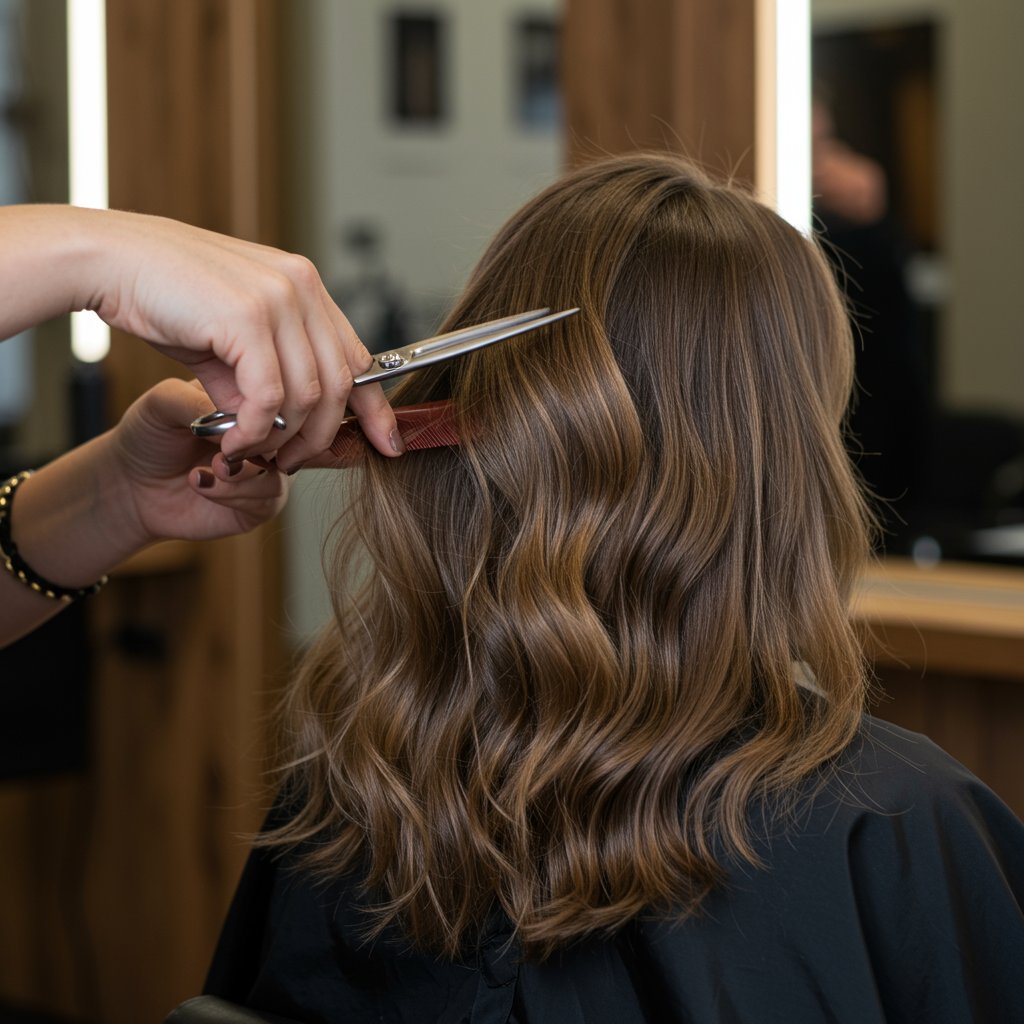
The Power of Layers and Texture
One of the most effective techniques for managing thick hair is layering. However, not all layers are created equal. Long, seamless layers (sometimes called 'internal' or 'invisible' layers) are fantastic for removing bulk and weight without creating a choppy or thin look. This allows the hair to move more freely and fall into a more flattering shape. A stylist might also use texturizing shears or point-cutting techniques to soften blunt ends and further reduce density in key areas. Avoid short, choppy layers, which can often make coarse hair appear wider and more unruly.
Styles That Flatter
Several styles work beautifully with thick, coarse hair. A long bob (lob) with textured ends is a modern classic that uses the hair's natural weight to its advantage. Long, flowing layers will always be a stunning choice, showcasing the hair's luxurious volume. Even shorter cuts like a well-structured pixie can work, provided the stylist is skilled at shaping thick hair. The key is communication. Talk to your stylist about your daily routine and styling capabilities to find a cut that not only looks great when you leave the salon but is also manageable for you at home.
Advanced Care: Salon Treatments and At-Home Rituals
For an extra dose of manageability and health, consider incorporating advanced treatments into your routine. These can provide long-lasting smoothness and deep hydration that daily products alone might not achieve.

Professional Salon Treatments
Professional salons offer a range of services designed to tame coarse, frizzy hair. Keratin treatments (or smoothing treatments) are a popular option. These treatments coat the hair shaft with a protein solution, which smooths the cuticle, reduces frizz, and cuts down on styling time for several months. A deep conditioning or glossing treatment at the salon can also provide an intense infusion of moisture and shine, reviving tired, dehydrated locks. Consult with a professional stylist to determine which treatment is best suited for your hair's specific needs and condition.
Beneficial At-Home Rituals
Elevate your home care with weekly rituals. Once a week, swap your regular conditioner for a deep conditioning mask or hair masque. For an extra boost, apply the mask, cover your hair with a shower cap, and let it sit for 20-30 minutes. The heat trapped inside the cap will help the product penetrate more deeply. Another game-changing habit is sleeping on a silk or satin pillowcase. The smooth surface reduces friction on your hair as you sleep, which means less frizz, fewer tangles, and less breakage over time. It's a simple switch with significant benefits.
Frequently Asked Questions About Thick, Coarse Hair
Q1: Why does my thick hair always feel so dry?

Thick, coarse hair feels dry primarily due to its structure. The wider diameter and more porous cuticle layer make it difficult for natural oils from the scalp to travel down the hair shaft and also allow moisture to escape easily. This is why a routine focused on adding and sealing in moisture with oils, creams, and conditioners is absolutely essential.
Q2: Is air-drying or blow-drying better for coarse hair?
Both can be effective if done correctly. Air-drying is gentler but can sometimes lead to more frizz if not prepped with the right products (like a leave-in conditioner and styling cream). Blow-drying with a nozzle pointed downwards helps to smooth the cuticle for a sleeker finish, but you must use a heat protectant. Many find a hybrid approach—air-drying 80% of the way and then finishing with a blow dryer—gives the best results.
Q3: How can I control my hair in high humidity?
Humidity is a major challenge. The key is to create a protective seal around the hair shaft. After washing and conditioning, use an anti-frizz serum or oil that contains silicones. Silicones create a lightweight, water-resistant barrier that blocks humidity from penetrating the hair cuticle. Hairsprays with an anti-humidity label can also provide a final layer of defense.
Q4: Can I get bangs with thick, coarse hair?
Absolutely! The key is the right kind of bangs. Heavy, blunt bangs can sometimes look too bulky. Instead, consider longer, wispier curtain bangs or side-swept bangs. These styles can be thinned out slightly by a skilled stylist to blend seamlessly with the rest of your hair and frame your face beautifully without adding excess bulk.
Q5: What's the single most important product for my hair type?
If you had to choose just one, a high-quality, hydrating leave-in conditioner would be the top contender. It provides a crucial base layer of moisture after every wash, makes detangling easier (preventing breakage), and primes the hair for any other styling products you use. It's the foundational step that makes everything else work better.
Your Journey to Gorgeous, Manageable Hair
Managing thick, coarse hair is not about forcing it to be something it's not. It's a journey of understanding, nourishment, and empowerment. By embracing its unique texture and providing it with the deep hydration and gentle care it craves, you can transform your relationship with your hair. From choosing the right sulfate-free shampoo to investing in a silk pillowcase, every step you take contributes to a healthier, more manageable mane.
The tips and techniques outlined here are your toolkit for success. Experiment with different products, find a stylist who truly understands your hair's architecture, and don't be afraid to develop a routine that feels right for you. Your thick, coarse hair is a statement of strength and beauty. With the right knowledge, you can ensure it makes the statement you want, every single day.


